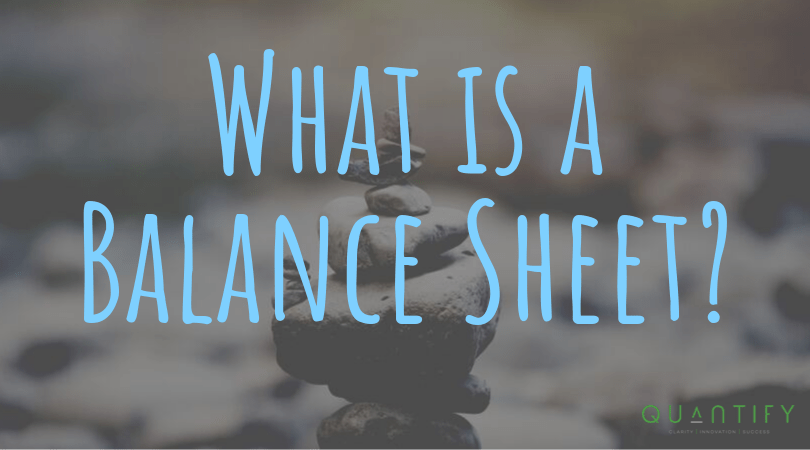There is a huge misconception among the small to mid-sized business community that the balance sheet serves little to no purpose. Before I address this, let’s first take a look at what the balance sheet actually means. The balance sheet shows the assets a company owns and the liabilities the company is responsible for at a particular date or moment in time. Conversely, the income statement shows the company’s performance over a certain period of time. For example, let’s say we produce an annual balance sheet and income statement for the calendar year 2019. The balance sheet would show all assets and liabilities as of 12/31/2019 while the income statement would show all revenues and expenses during that period (1/1/2019 – 12/31/2019).
So why is it called a “balance” sheet? There is a basic accounting equation that requires the “balance” sheet to balance at all times. The equation is:
Assets = Liabilities + Owner’s Equity
Below I will explain more clearly each of these elements. I was reading some articles on the balance sheet recently and one person had an interesting take. They essentially said that assets are anything owned by a lender (liability) or by the owner (equity). Obviously this would get you back to the equation of assets = liabilities + equity.
Assets
An asset is anything that the business controls and has financial and/or economic value. Assets typically include items such as cash, accounts receivable, equipment and inventory. Full ownership of the assets does not matter in this situation. For example, let’s say you buy a new piece of machinery and finance it 100%. Even though it is technically not yours yet, it is still listed as an asset on the balance sheet.
Liabilities
Liabilities are debts that you owe others or future obligations. This would include items such as accounts payable, mortgages and business loans. Liabilities may also include amounts received in advance for future services rendered. For example if you receive money upfront for a project which will begin in three months, the money you receive is “deferred” until services are performed for the client.
Equity
As the owner of the business, equity is how much of the business you own. If you sold all the assets of the business and paid all the debts, your equity is what would be left. Keep in mind however that equity is not necessarily what the business is worth. Typically businesses are valued as a multiple of sales, EBITDA, cash flow, or other considerations.
Things to Look For
Assets and liabilities are broken down into current (one year or less) and long term (over a year). Examples of current liabilities are things like cash and accounts payable due in less than one year. It is very important to compare your current assets to your current liabilities. Ideally you should have enough in current assets to cover all your current liabilities.
Accounts receivable and accounts payable are also two items to keep a close eye on. This will show you all the money that people owe you and the money that you owe everyone else. It is crucial that these balances are accurate and up to date at all times. You always want to try to speed up your accounts receivable collections and delay paying your accounts payable within reason. This will greatly increase your cash flow which is a major issue for many businesses. If you don’t track these on a consistent basis you may find yourself in a “cash crunch”.
There are many other things to monitor on the balance sheet but these are just a few to keep an eye on. Make sure if you don’t understand your balance sheet completely that you engage a professional to help you.
How healthy is your Balance Sheet?






